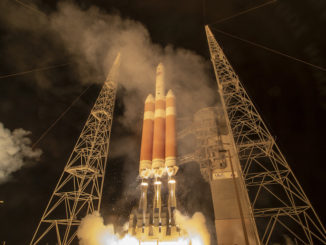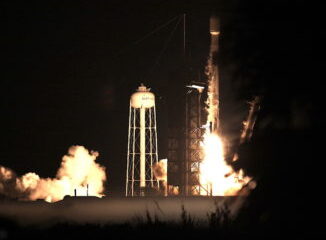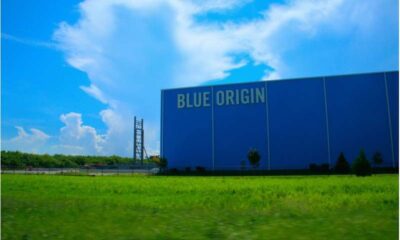Science
SpaceX Launches Dragon to ISS, Supporting 50 Science Projects

A SpaceX Falcon 9 rocket successfully launched from Cape Canaveral Space Force Station in the early hours of Sunday, August 25, 2025, marking the start of the company’s 33rd Commercial Resupply Services (CRS-33) mission to the International Space Station (ISS). The launch carried over 5,000 pounds of cargo, including supplies for astronauts and new propulsion systems for orbital maneuvers.
The Dragon spacecraft, designated C211, is expected to dock with the ISS at the forward port of the Harmony module on Monday at 07:30 EDT (11:30 UTC). This mission signifies a milestone as it represents the 50th Dragon vehicle to reach the ISS since the program’s inception.
“These missions have flown well over 300,000 pounds of cargo and supplies to the orbiting lab, contributing to more than 1,000 science and research projects,” said Sarah Walker, director of Dragon Mission Management at SpaceX. She emphasized the importance of ongoing research that benefits life on Earth and enhances our understanding of living and working in space.
Inside the Dragon, equipment for over 50 science experiments and technology demonstrations has been loaded, covering a range of fields from 3D metal printing to investigations into bone loss. This mission aligns with NASA’s ongoing commitment to scientific exploration and innovation.
Celebrating 25 years of continuous human presence in low Earth orbit, the ISS has hosted over 280 residents and facilitated more than 4,000 scientific experiments conducted by researchers from over 110 countries, as noted by Heidi Parris, associate program scientist for NASA’s ISS Program Research Office.
During its time docked, the Dragon spacecraft will conduct a series of burns to assist in maintaining the ISS’s altitude, utilizing an independent propellant system and two Draco engines located in the spacecraft’s modified trunk. This capability will reduce the reliance on Russian Progress vehicles and the station’s thrusters as NASA, Roscosmos, and other international partners prepare for the ISS’s eventual decommissioning around 2030.
“This mission is an exciting opportunity for us to become an even more integrated part of the ISS operations ecosystem,” Walker added.
In addition to the CRS-33 mission, SpaceX is under contract with NASA to develop the U.S. Deorbit Vehicle, scheduled for delivery between 2028 and 2029. This vehicle will play a crucial role in the final stages of the ISS’s operational life, ensuring a smooth transition as the space station approaches its end of service.
As the CRS-33 mission unfolds, the collaboration between SpaceX and NASA continues to demonstrate the significant advancements in space exploration and research. The ongoing commitment to science and technology promises to yield valuable insights for both space and Earth-based applications.
-

 Technology5 months ago
Technology5 months agoDiscover the Top 10 Calorie Counting Apps of 2025
-

 Health3 months ago
Health3 months agoBella Hadid Shares Health Update After Treatment for Lyme Disease
-

 Health3 months ago
Health3 months agoErin Bates Shares Recovery Update Following Sepsis Complications
-

 Technology4 months ago
Technology4 months agoDiscover How to Reverse Image Search Using ChatGPT Effortlessly
-

 Technology1 month ago
Technology1 month agoDiscover 2025’s Top GPUs for Exceptional 4K Gaming Performance
-

 Technology3 months ago
Technology3 months agoElectric Moto Influencer Surronster Arrested in Tijuana
-

 Technology5 months ago
Technology5 months agoMeta Initiates $60B AI Data Center Expansion, Starting in Ohio
-

 Technology5 months ago
Technology5 months agoRecovering a Suspended TikTok Account: A Step-by-Step Guide
-

 Health4 months ago
Health4 months agoTested: Rab Firewall Mountain Jacket Survives Harsh Conditions
-

 Lifestyle5 months ago
Lifestyle5 months agoBelton Family Reunites After Daughter Survives Hill Country Floods
-

 Health3 months ago
Health3 months agoAnalysts Project Stronger Growth for Apple’s iPhone 17 Lineup
-

 Technology4 months ago
Technology4 months agoHarmonic Launches AI Chatbot App to Transform Mathematical Reasoning


















